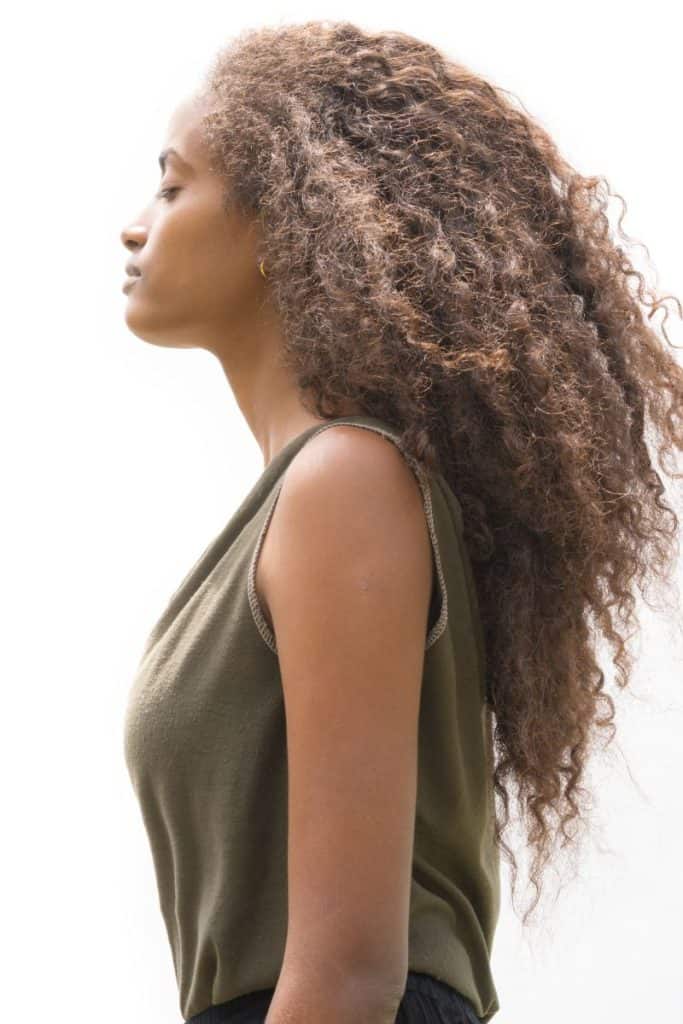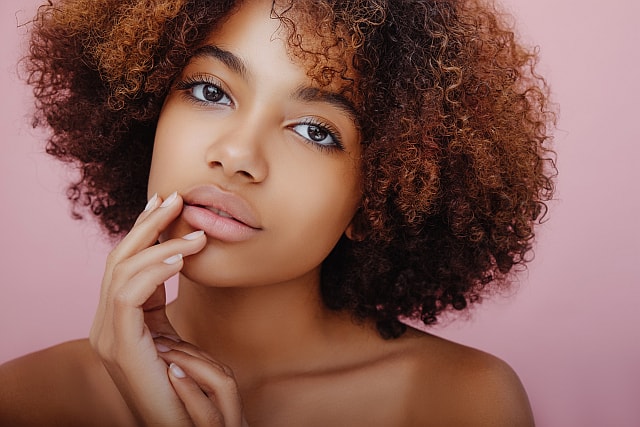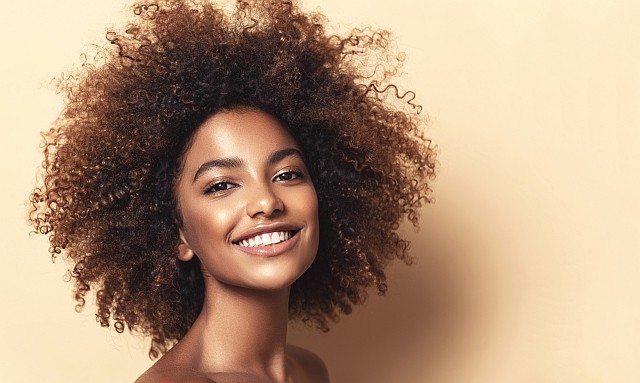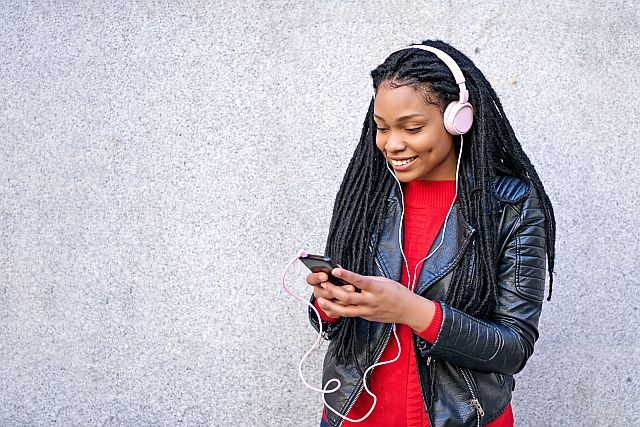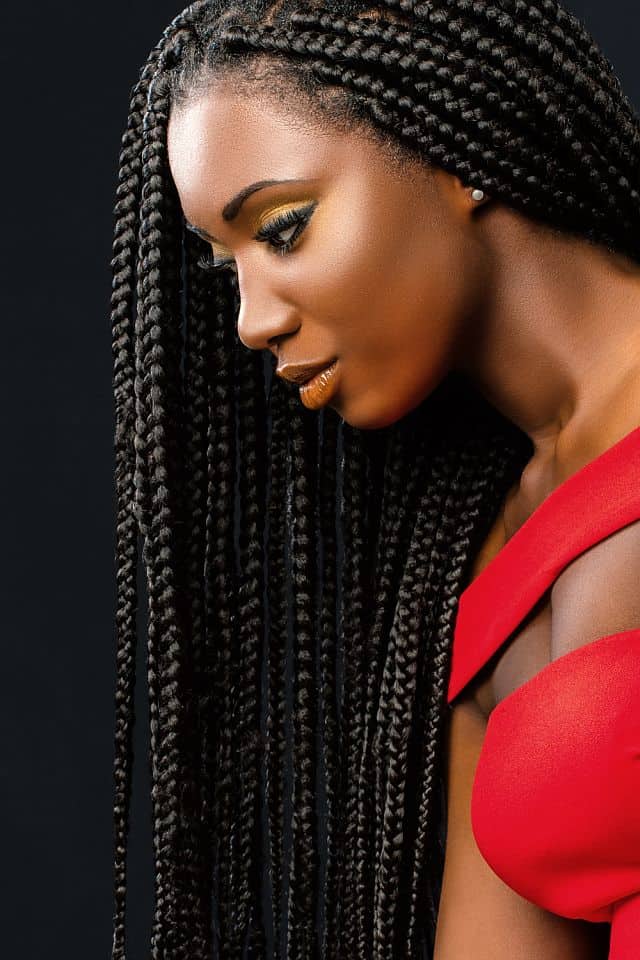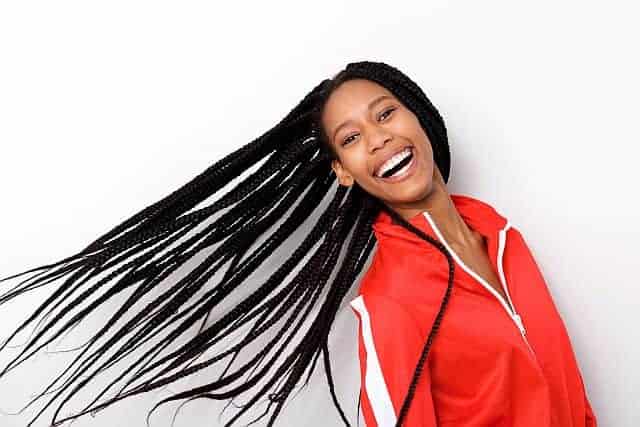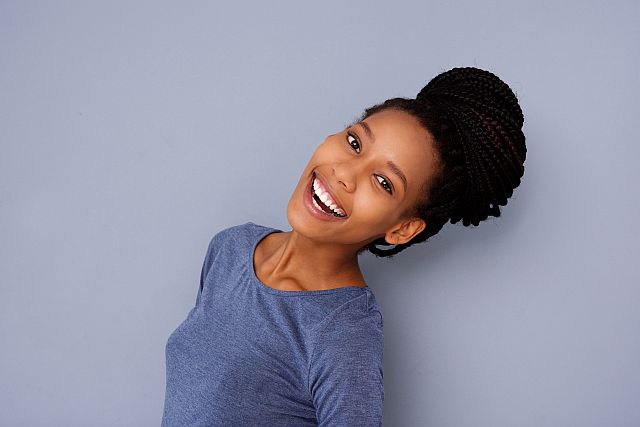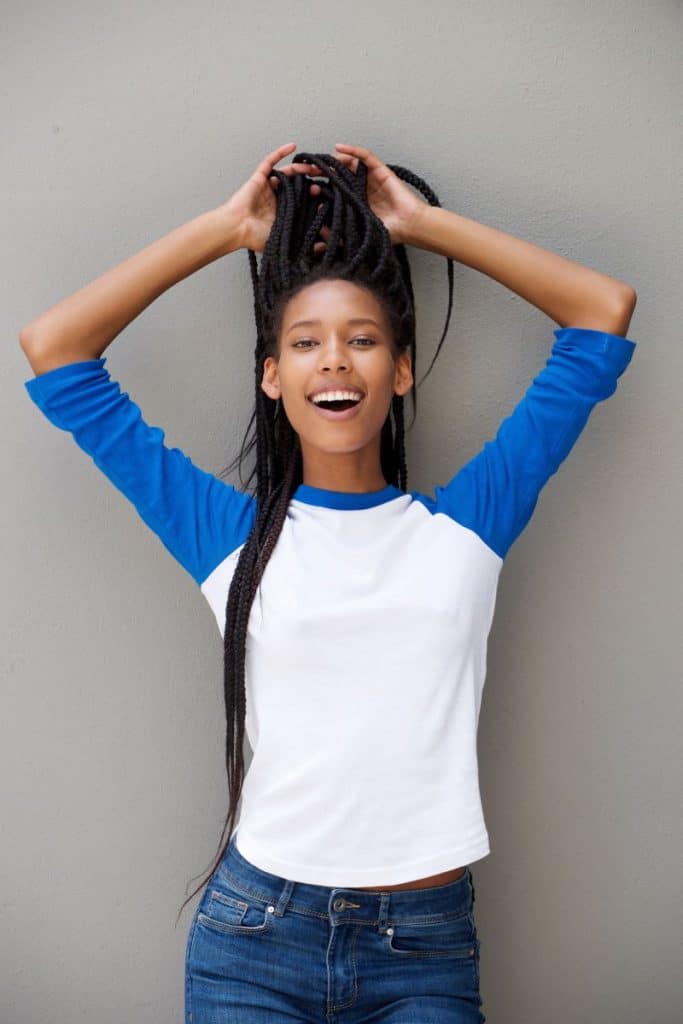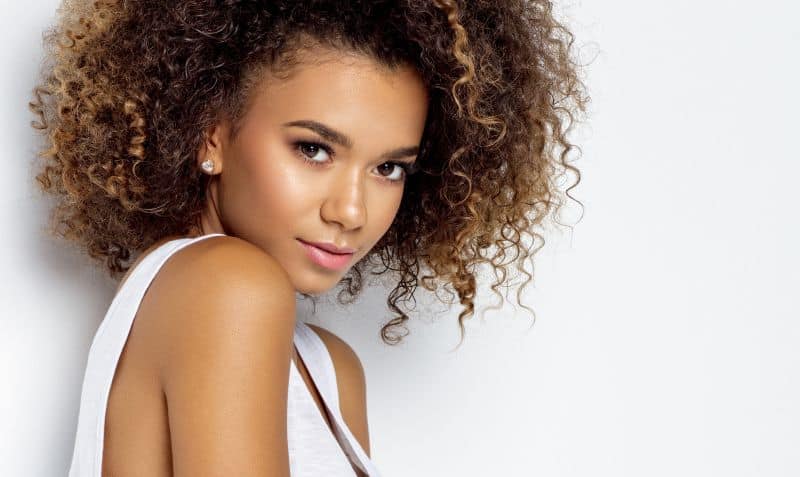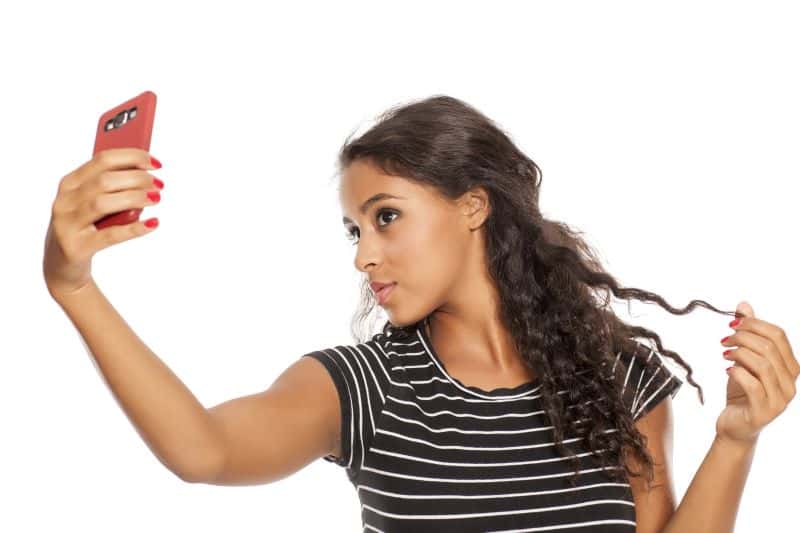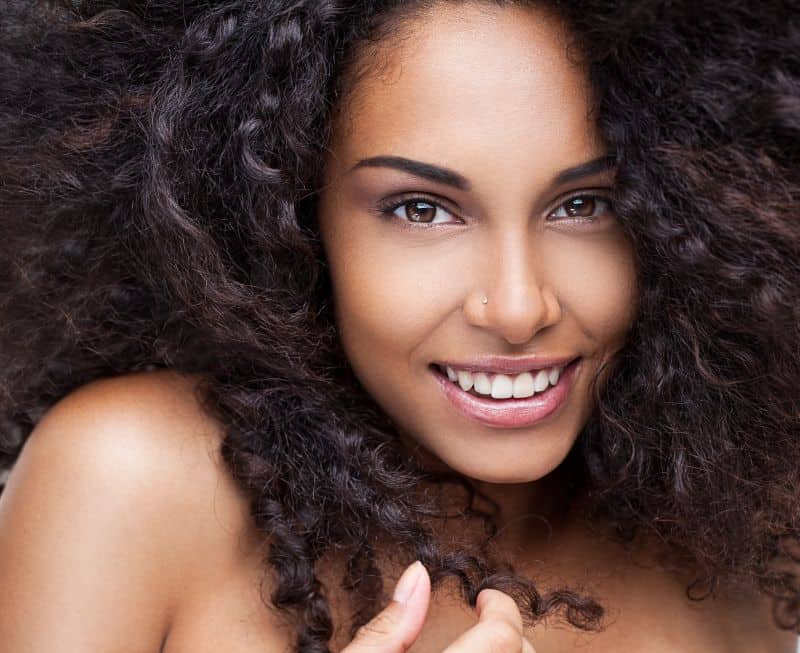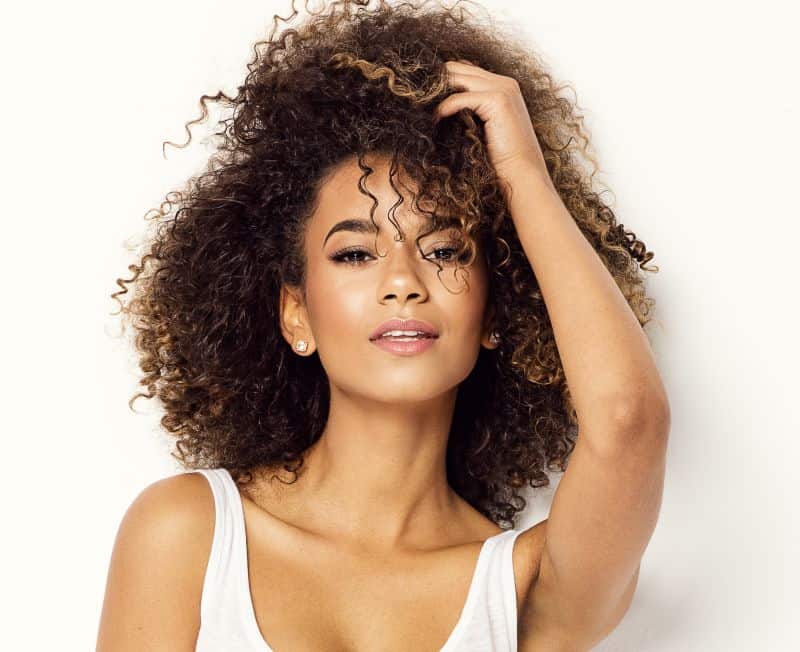Nowadays, I’m a lot lazier when it comes to styling my hair, but I remember when I first went natural, I would have my hair in a cute style all the time. Twist-outs, Bantu knots, braid-outs, wash-and-go’s… the whole nine! And there was nothing, absolutely nothing, that I hated more than going to bed with cute hair and waking up to a matted helmet! I had only learned how to execute the style, not maintain it. So through trial and error and pointed searches on YouTube, I finally learned how to protect my natural hair at night. After that, I was unstoppable!!
So today, let’s make you unstoppable too by showing you different protective styles for curly hair at night and when to use each one. Here’s to cute hairstyles that you can actually wear the whole week (or more)! 🥂
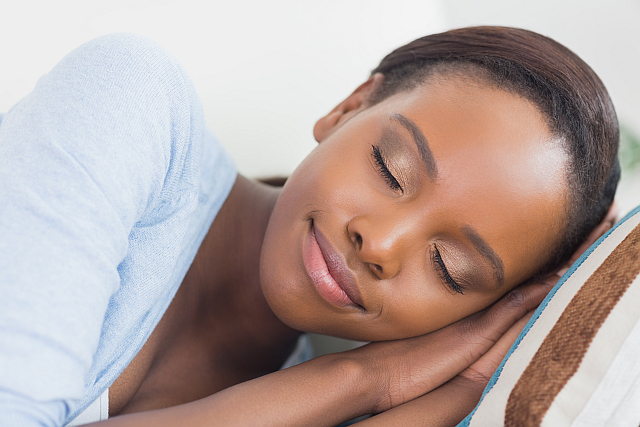
How to Maintain Curly Hair at Night:
When it comes to maintaining your natural hair as you sleep, there are 3 steps to your hair’s nighttime routine:
- Moisturize (if needed)
- Tie or braid your hair, and
- Cover with a satin bonnet or a scarf.
Seems simple, right? And it is simple! It varies a teeny bit, but those basic principles remain the same.
Your routine for protecting your curly or coiled hair at night will vary slightly depending on 3 things:
- Hair length
- What style your hair is in
- What kind of sleeper you are
- Hair Length
The golden standard when it comes to protecting your hair while you sleep is the pineapple, where you gather all your hair and tie a ponytail at the top of your head. If you have medium-length or really long hair, then this will work for you. But if you’ve got short hair, we’ve got to be a little more creative.
So, for everything from the TWA (Teeny Weeny Afro) to that ‘teenage phase, you may want to try banding instead. With banding, instead of trying to get your hair into one big pineapple, we’ll part the hair into sections and use elastic bands/ scrunchies that aren’t too tight to keep the hair in each section stretched. Do this all over your hair and then cover it with your bonnet or scarf.
If you’re not trying to preserve any type of curly pattern, then you can tie your scrunchie all the way from near your scalp to the ends of your hair. But if you’d like to preserve a curl or a protective style, then you’ll need to do a little bit more.
- What Style Your Hair Is In
Loose Natural Hair (Undefined)
If your hair is short, then all you really need to do is moisturize if needed and then put on a bonnet. Because we didn’t do anything to keep the hair stretched, it will be scrunched together in the morning, but it will be really easy to fluff using a pick and/or your hands. Since there is no curl pattern that you’re worried about losing, anything goes.
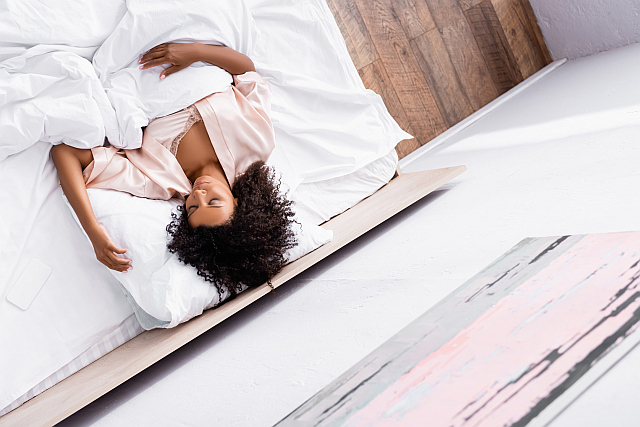
Wash-and-Go
The Wash-and-Go is very similar to loose natural hair, but this time, you’ve got hundreds of little curls, coils, or spirals that you need to maintain.
The trick to maintaining your curly natural hair at night is to make sure that the ends of your hair stay defined. When the ends of your wash-and-go still look defined, even though the middle is a bit stretched, your style will still look pretty good. So we need to keep those ends protected and find a way to retain length.
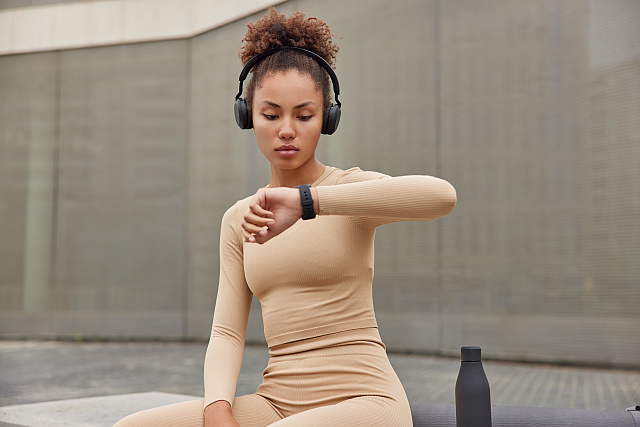
You can opt to pineapple your hair, which will stretch the back of your hair and help give you more volume at the top. If your hair is short, you can achieve the same thing using the banding method. Then, the last step is to put on a loose bonnet. You’ll want to give your hair enough space to move around without being squished.
Pro tip: If you prefer for your hair to be flatter at the top, then instead of tying a pineapple, tie your hair into a low ponytail. Then, tie a scarf around your hair leaving out the hair in the ponytail. Top that off with a loose bonnet, so your ends have enough room, and you’ll wake up to a flat, sleeker top.
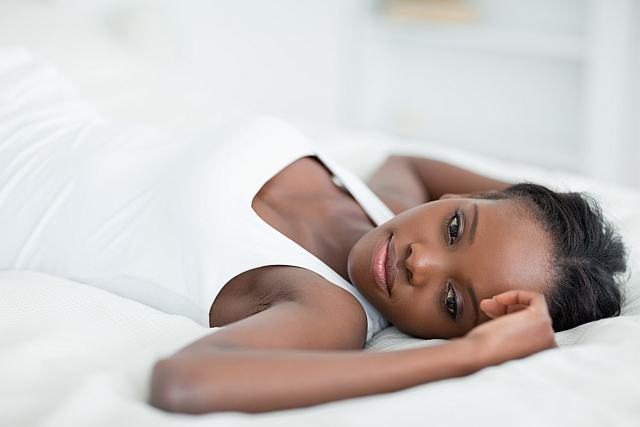
Twist-Outs, Braid-Outs, and Bantu Knots
You’re probably not going to like what I have to say… But the best protective style for curly hair at night is to retwist or re-braid it. So without brushing the hair out, retwist your hair into large sections and then put it on your scalp or bonnet. Aim for 10-15 twists on your whole head. The next day when you take your twists or braids down, your curls would have been preserved beautifully and will easily separate into the smaller sections that you had the day before.
Now, do you have to retwist your twist out at night? No, and the same thing goes for your braid-outs and Bantu knots.
The next best option is to use either the banding or pineapple method on large sections of your hair. These won’t do as great of a job as the retwist, but it should be enough to get you 5-7 days with your style. For the best results, when banding, wrap from near the base to somewhere near the ends. This will ensure you have bigger hair the next day. Just make sure not to wrap it too tight or you’ll lose all of your curls.
Braids, Locs, and Crochet Braids
When your hair is in these types of protective styles, they tend to remain stretched anyway, so there’s no need to do anything in that department. What we will do is get a big bonnet or scarf to cover your hair. Something big enough to accommodate all of your hair in it so that it doesn’t get frizzy.
If you’ve got human hair locs, your hair, or extensions, then it might be a good idea to moisturize your hair before you put it in the bonnet.
Related: How to Maintain Your Crochet Braids So They Last Much Longer
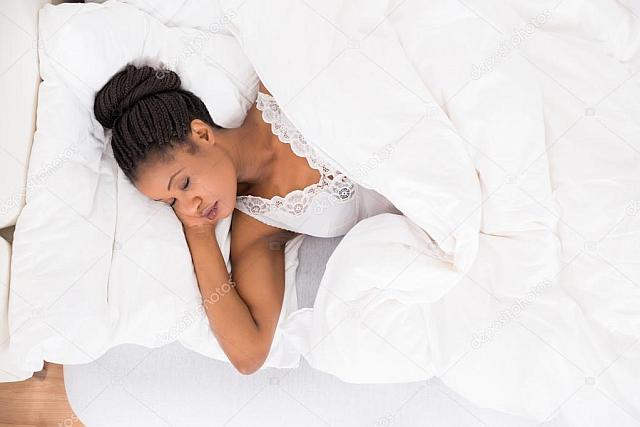
- What Kind of Sleeper Are You
Delicate and Dainty
If you’re one of these lucky ones, then anything goes. You can wear any bonnet or scarf. They all work. The ‘fight’ comes in the next section, where I also fall.
Rough and Tumble
Y’all! I move a lot when I sleep, so the bonnets with elastic bands don’t work that well for me. I have to use scarves or bonnets that can be tied or those with a drawstring.
So far, so good. My bonnet stays on the whole night 99% of the time. So if you’re like me, definitely try these out!



